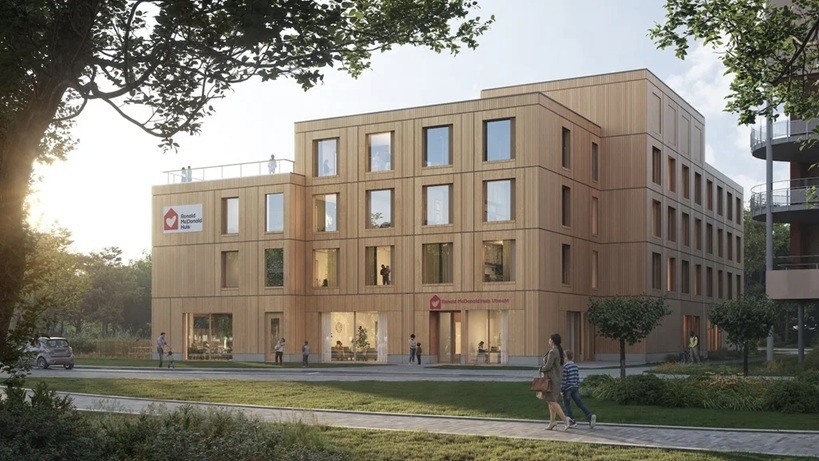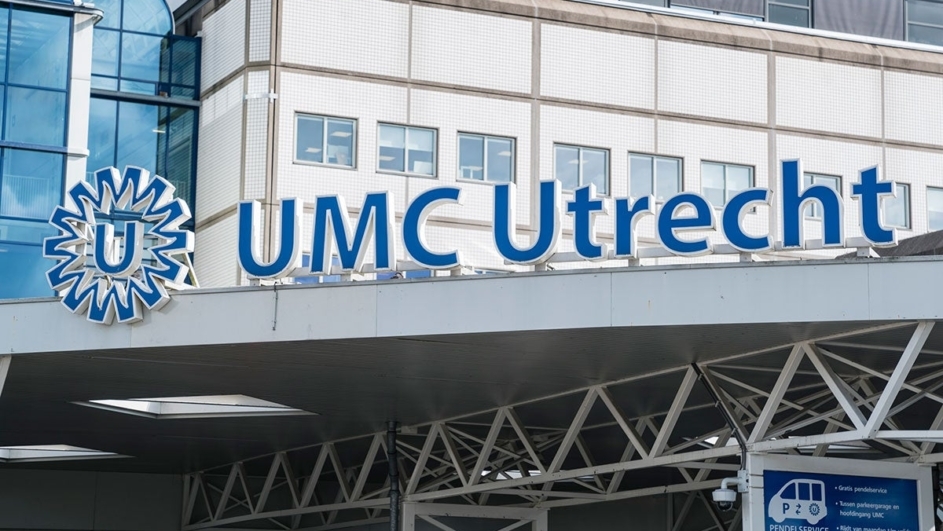Utrecht University uses biomeiler to extract heat and compost at educational farm the Tolakker

When Lasse Lamet, bachelor student Global Sustainability Science, visited a farm in Germany for a study project, he saw a biomeiler: a large round tank in which compost is made. Building an improved version in Utrecht Science Park, that seemed a fun and above all practical internship assignment to Lasse. He mobilised staff and students to realise the project. Last week, the biomeiler was placed at the Tolakker, the educational farm of the Faculty of Veterinary Medicine.
It is hard to miss the biomeiler at the Tolakker: the tank has a 6-metre diameter and is 3 metres high. What makes a biomeiler special is that the composting process generates usable heat. Within the biomeiler there are several tubes. The water in these tubes captures the heat released during the composting process. That heat is then used by the Tolakker. About 100 megawatts of heat are expected to be released every year. That is equivalent to the annual consumption of four households.
The biomeiler is filled with wood chips and two hundred cubic metres of organic waste. After two years, this produces high-quality compost. Lasse: ‘The composting process in the biomeiler is given plenty of time. Because we can regulate the conditions, this compost will soon contain twice as much organic matter as normal compost. Organic matter nourishes life in the soil and retains water better.’
Puzzle
To realise the project, a lot had to be arranged. Think financing, permits and, of course, a location. Lasse: ‘We looked at ten locations, but each time there was a reason why it couldn’t be done there after all. Zoning plans, cables and pipes: it was like a puzzle, new problems popped up every time.’
To speed up the process, Lasse enlisted the help of the Centre for Living Labs. Together, they invited all stakeholders to a meeting. Then the project gained momentum. Eventually, the installation could be built at the Veterinary Medicine faculty’s teaching farm, the Tolakker. Education coordinator and lecturer IJmert de Vries: ‘Within the Tolakker, we are always looking for opportunities to further improve our business processes and make them more sustainable. Think of the solar panels on the roof of the stables, how we produce organic milk and how we try to increase biodiversity together with other faculties and students. This is how education and research at the Tolakker come together in a beautiful way. Lasse’s project fits seamlessly with our ambition, as an educational farm, to look even more closely at innovation opportunities for a better future.’
Biomeiler 2.0
In cooperation with the Biomeiler Foundation, two improvements have been made to the biomeiler. The first improvement is the addition of a lid. The lid allows additional heat to be captured. The second improvement is active aeration. Lasse: ‘Bacteria cause organic material to compost. They need oxygen, but the amount of oxygen listens closely. With active aeration, the composting process runs optimally and the heat yield is as high as possible.’ Over the next two years, the effectiveness of the improvements will be measured by students.

Laigo Bio at Utrecht Science Park raises €11.5 million in investments
Laigo Bio, a start-up located at Utrecht Science Park in the Life Sciences Incubator building, announced today that it has raised €11.5 million in investments from a large number of leading investors.

Ronald McDonald House Utrecht presents plans for new, larger House with 50 rooms
Ronald McDonald House Utrecht is building for the future. At Utrecht Science Park, next to the Wilhelmina Children’s Hospital and within walking distance of the Princess Máxima Center, Ronald McDonald House Utrecht has advanced plans to build a brand new, sustainable House with 50 guest rooms. Preparations are well underway, and construction is scheduled to begin in the second half of 2026. The goal is to open the new House sometime in 2028. This expansion will allow the House to offer more families of seriously ill or care-intensive children a warm home, allowing them to be close to their sick child day and night.

Renewal and sustainability UMC Utrecht
In the coming years, most of the UMC Utrecht will be renovated, rebuilt or newly constructed. Many of our buildings are already nearly forty years old and require renovation and sustainability.

Utrecht Science Week anniversary edition a great success
The fifth edition of Utrecht Science Week was a resounding success! With more programs, locations, speakers, and visitors than ever before, we look back on an exciting week. The variety of programs and the diverse audience were wonderful to witness. This way, the groundbreaking research here at Utrecht Science Park isn’t kept behind closed doors, but is given the opportunity to inspire others.